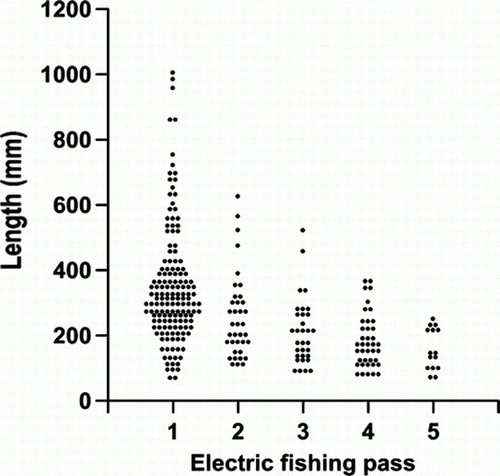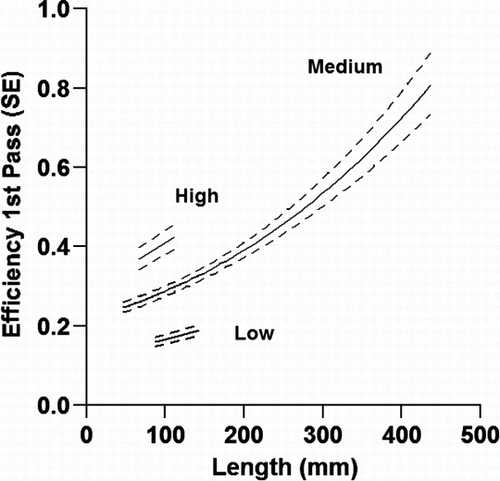Figures & data
Figure 1 Photographs of the reaches studied in A, Birdlings Brook; B, Pigeon Bay Stream and C, the Waipara River showing variations in channel form, riparian vegetation and substrate composition.

Table 1 Physical features of reaches surveyed. Boulder (>264 mm), cobble (64–264 mm), coarse gravel (8–64 mm), fine gravel (2–8 mm), sand (0.06–2 mm) and silt (<0.06 mm).
Table 2 Duration of fishing effort (minutes) and total catch in each pass.
Table 3 Fish species caught, scientific names, size classes (mm) of eels and short codes.
Figure 2 Trends in catches (log) of different size classes and species of eels and species of bullies in consecutive electric fishing passes in Pigeon Bay Stream. Passes 1–3 were during the day while passes 4 and 5 were at night.

Figure 3 Dot plot of the length frequency of longfin eels caught in consecutive passes in the three reaches combined.

Table 4 Statistical significance and magnitude of changes in mean length (mm) in consecutive passes; analysis of covariance using river as a categorical factor.
Table 5 Akaike's information criterion (AICc)and Akaike weights for competing negative binomial models (theta = 58) of the catches of each species and size classes (n 1 − 5) in each electric fishing pass.
Figure 4 Estimated electric fishing efficiency (±1 SE) for pass 1 plotted against fish length (mm) for three species and size groups. High, torrentfish and Canterbury galaxias; low, small and medium shortfin eels, ammocoetes and inanga; medium, longfin and large shortfin eels, bullies and juvenile brown trout ().
